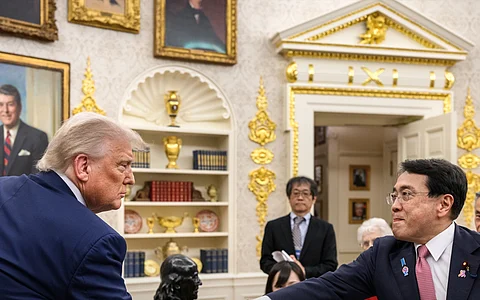

On Tuesday, U.S. President Donald Trump announced a significant trade agreement with Japan, marking a pivotal moment in bilateral relations.
The deal, described as one of the largest in U.S. history, includes a reduction of tariffs on Japanese exports from 25 percent to 15 percent, alongside a commitment from Japan to invest $550 billion in the U.S.
This agreement follows months of intense negotiations, with Japan securing the lowest tariff rate among countries with a trade surplus with the U.S.
The trade pact has sparked a surge in Japanese auto stocks, with companies like Toyota and Mazda seeing gains of over 14 percent and 17 percent, respectively.
Japan’s Nikkei 225 index climbed nearly 4 percent, reflecting optimism about the deal’s economic benefits.
The agreement also opens Japanese markets to U.S. agricultural products, such as rice, and includes a joint venture for liquified natural gas development in Alaska.
Japan’s Prime Minister Shigeru Ishiba noted the deal aligns with national interests, though he emphasized the need to review its specifics carefully.
The agreement does not cover steel and aluminum tariffs, which remain at 50 percent, according to Japan’s trade envoy Ryosei Akazawa.
This deal, part of Trump’s broader trade strategy, follows preliminary agreements with other nations and signals a shift toward reducing trade barriers while fostering significant foreign investment in the U.S.